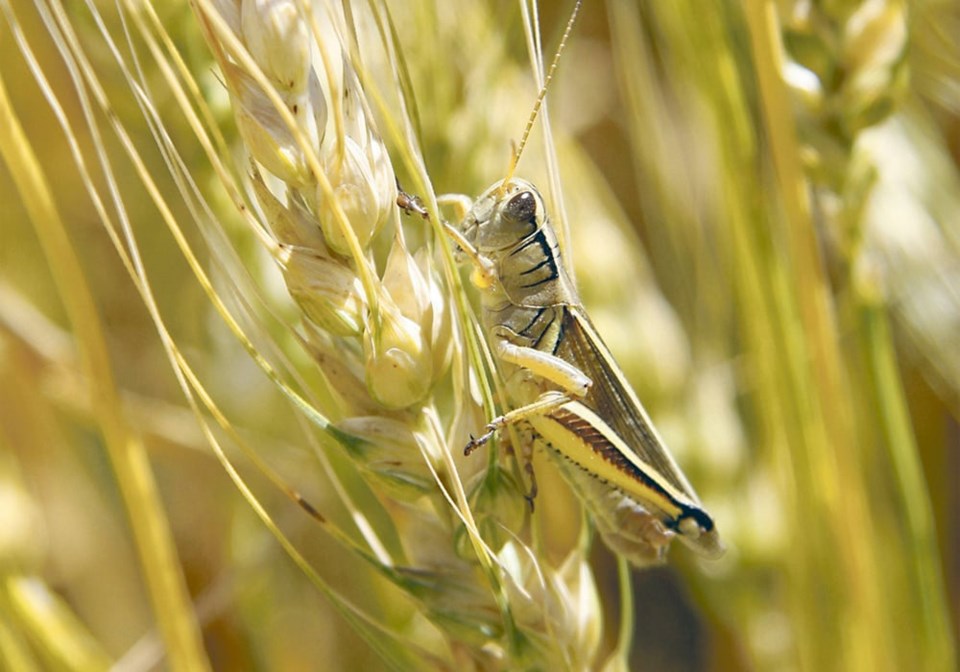WESTERN PRODUCER — It’s been another bad year for grasshoppers in many parts of the Prairies.
Some farmers have told us that whatever crop managed to grow in this summer’s drought was eaten by the voracious insects.
The problem isn’t new, of course.
Histories of the early days of farming on the prairie, particularly in the United States in the mid-19th century, are replete with hair-raising stories of grasshopper scourges.
In fact, some of the stories are so far removed from modern encounters with grasshoppers that it’s hard to believe they are true.
Stories from places like Kansas in the 1870s talk about swarms of grasshoppers eating not only crops but also leather harnesses, fence posts, clothes and wool straight from the sheep’s back. Similar reports were made from Western Canada, particularly Manitoba.
I’ve read about farm women putting blankets over their gardens, only to watch the blankets be eaten first and then the garden.
Farmers used to say that the insects “ate everything but the mortgage.”
The destruction was bad enough, but I think the massive swarms must have been worse.
Laura Ingalls Wilder wrote in On the Banks of Plum Creek about a devastating swarm that destroyed her father’s crop.
One of the worst swarms was recorded in the western U.S. in 1875, named the Albert Swarm after Albert Child, a doctor who calculated its size at 510,000 sq. kilometres as it moved through southern Nebraska. Child figured the bug cloud contained about 3.5 trillion insects.
Grasshoppers are called grasshoppers when they hang out by themselves, but they are actually referred to as locusts when they band together and turn into swarms, which makes them seem even scarier.
These cataclysmic events don’t sound anything like the grasshopper problems we have today, as bad as they may be.
So what happened?
As it turns out, the critter causing all this mayhem in the 1800s was the Rocky Mountain grasshopper, and it’s not around anymore.
Scientists aren’t exactly sure why, but the species went extinct sometime around the turn of the century. The most common theory is that farmers helped kill the marauding ’hopper by breaking the land and destroying its breeding grounds.
It’s thought that the last specimen might have been collected on a farm near Treesbank, Man., southeast of Brandon in 1902.



